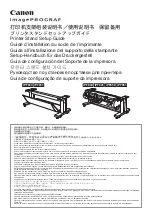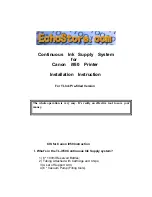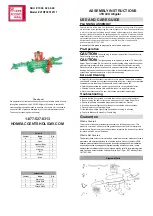
ASCII Programming
MI3
107
18.6.3
Alarm Output
The alarm output (see section 6.4
, page 38) can be driven by two triggers:
•
object temperature
•
head ambient temperature
KH=off
no alarm control
KH=1
object temperature drives alarm control
KH=2
head ambient temperature drives alarm control
KB=0
relay contacts permanently open
KB=1
relay contacts permanently closed
KB=2
relay contacts normally open
KB=3
relay contacts normally closed
XS=125.3
threshold setting to 125.3°C (if U=C is set)
18.6.4
Factory default values
It is possible to reset the unit to the default values.
XF
factory default values will be set
18.6.5
Lock Mode
The access to the unit is possible via serial interface (software) and via the direct user input (mode
buttons, LCD display). It is possible to lock the
button. This allows the change of parameters to the
unit only via software.
J=L
direct user access to
button denied
J=U
unlocking the
button
18.6.6
Mode Setting for the Digital Input FTC3
The digital input FTC3 (see section 7.4
, page 43.) can be used as follows:
XN=T
FTC3 as trigger
XN=H
FTC3 with hold function
18.6.7
Ambient Background Temperature Compensation
To compensate the ambient background temperature, the following modes are available:
AC=0
no compensation
AC=1
compensation with a constant temperature value set with command A.
AC=2
compensation with an external voltage signal at the analog input FTC2 (0 V – 5V
corresponds to low end and high end of temperature range). Current ambient
temperature is readable with command A.
Note: The mode AC = 2 does not function in case of setting the command ES = D!
For more information regarding the ambient background temperature compensation feature, see
section see section 7.3
Ambient Temperature Compensation
18.7
Addressing of Multiple Heads
The communication boxes support up to 8 heads. To direct a command to one head among the 8
possible, it is necessary to “address” the head command. Therefore, a number between 1 and 8 is set
prior to the head command.
1.800.868.7495













































